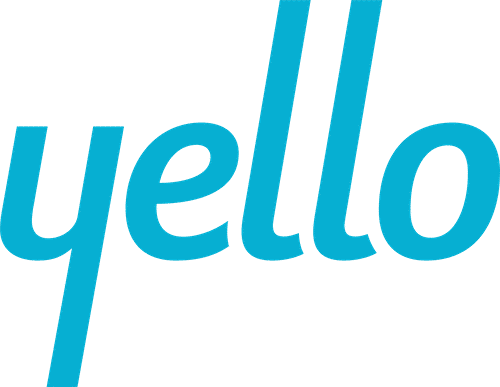When it comes to modern high-volume recruiting, leading brands are expanding their list of tactics — from social media recruiting to employer branding to digital recruiting strategies. But many companies are underutilizing their learning and development (L&D) strategy as a crucial way to attract top talent.
Although learning and development is often viewed as an onboarding and retention initiative, straightforward changes to your L&D strategy will help boost recruitment metrics, increase your organization’s competitive advantage, and make your company the desired destination for incoming talent.
The 2019 L&D report from findcourses.co.uk found that 72% of market leaders use talent development as a recruitment strategy. If you’re hoping to give your company’s recruiting strategy an extra boost, read on to discover how you can leverage your learning and development strategy as a recruitment goldmine.
Make Your Training More Relevant
The first step in the process is taking stock of where your learning and development strategy currently stands, and evaluate how to make it more relevant for incoming talent.
The workforce is rapidly and constantly changing, and it’s important to recognize that there are key differences between Millenial and Gen Z job seeker expectations.
Dave Miller, Global Talent Development Manager at WilsonHCG, finds that consistent reevaluation of your training program is the best way to ensure that your L&D program is strategically aligned with what job seekers expect from future employers.
“What worked 12 months ago may not work now. As a team one thing we’ve learned to do is assess weekly what we do and then make changes. Our programs are changing constantly because our workforce is changing constantly.”
— Dave Miller, Global Talent Development Manager, WilsonHCG
Recruiting on a global scale makes it all the more important to evaluate how your training program relates to cultural differences. Diversity recruiting has never been more important, and demonstrating your organization’s culture of inclusivity is crucial to attracting young talent.
Step Up Your Game With Integrated Training
Once you’ve made your training program as relevant as possible for a diverse talent pool, think about how you’ll nurture employees during the onboarding process.
While similar in many ways, Gen Z candidates have particular workplace expectations that differ from their Millenial and Gen X counterparts. Research indicates that Gen Z candidates are more likely to job hop — making development opportunities within your organization a key element to reduce turnover and increase employee engagement.
One way to make these changes is by integrating training and employee wellness into one holistic professional development program. At Manning Gottlieb OMD, training and ongoing well-being are considered equally important in their L&D program. All employees are required to go through four main training areas:
● Bootcamps
● Core Strengthening
● Personal Training
● The Spa
The first three areas cover diverse areas of soft-skill training like microlearning, core skill development and coaching and mentoring. However, The Spa may be the key to MG OMD’s success. At The Spa, employees have the opportunity to prioritize their mental and physical health through massage, courses in stress reduction, yoga, pilates, and more.
“Our approach is simple. We need our people to be physically and mentally healthy for them to get the most from other areas of training, and to produce the best work for our clients.”
— Clare Walsh, People Business Partner, Manning Gottlieb OMD
Manning Gottlieb OMD emphasizes its integrated development program when speaking with potential candidates to demonstrate their dedication to employee well-being, which has generated positive results in their recruitment efforts.
“We are actively looking for opportunities to share our program with prospective employees, and the reaction to that sharing has been very positive so far. It’s a fantastic way for us to articulate our desire to develop our employees on both a personal and professional level.”
— Clare Walsh, People Business Partner, Manning Gottlieb OMD
Companies with growing revenue are 3x more likely to increase their learning and development budgets compared to companies that haven’t seen growth. Integrating training and well-being is one way to effectively invest in an L&D strategy that will improve your recruitment metrics and employee well-being rolled into one convenient development package.
See Long-Term Benefits With Upfront Investment
The Wall Street Journal reports that more than 40% of employees are highly stressed at work. As a result, how you plan, develop and invest in your employee development program will become increasingly important in improving your recruitment strategy.
L&D programs are often first on the chopping block when budget season requires reducing or cutting line items altogether. But overlooking the importance of L&D will cost your organization more money in the long run.
To ensure the success of your L&D investment, ensure that you or your team of managers are competent in comprehensive leadership skills like:
● Communication
● Supporting change
● Resolving conflict
● Motivating employees
Steering the ship is no easy task, but by building a business case to maintain and improve your organization’s L&D function, the payoff will be well worth the effort.
Rebecca Edwards, the Director of Learning and Development at HomeServe has seen just how harmful reducing or avoiding investment in L&D can be.
“When times are tough it’s easy to forget about training and development. The more you invest in it upfront, the longer term the benefits will be. I’ve been in a company where the L&D team and budget was slashed…and you saw the company unfold in front of your eyes.”
— Rebecca Edwards, Director of Learning and Development, Home Serve
Whether you’re looking for a complete refresh of your current talent strategy or want to make small improvements over time, strategically leveraging your L&D function for recruitment will benefit your organization and your current and future employees now, and as your enterprise moves into the future.




